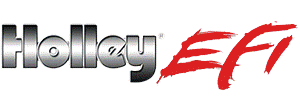|
|
|
#1 |
|
VIP Member
Join Date: Dec 2001
Location: phoenix
Posts: 1,406
Likes: 53
Liked 654 Times in 254 Posts
|
The Old Motor
HOME ABOUT ADVERTISE CONTACT CONTRIBUTE GIVE BACK LINKS THE WORKSHOP Part II: Cheating in NHRA Championship Racing Using Roller Bearing Crankshafts August 7, 2019 By David Greenlees: This is the second part of this story and this installment of it features a custom built-up-ten-piece roller bearing crankshaft for a Mark IV 427 c.i. Chevrolet V-8 engine that was used in NHRA Championship Race meets in the 1970s. If you are new to this series of posts you can look back to Part I where we covered the background information about how and why these crankshafts were manufactured. This particular crankshaft is a more exotic and costly proposition than the one-piece crank in “Part I.” This shaft was precision machined from individual pieces of forged aircraft alloy steel that was heat-treated and surface hardened to prevent wear by the bearing rollers. Ten-piece-built-up Mark IV 427 c.i. Chevrolet V-8 roller bearing crankshaft (top), five main bearings and roller thrust bearings and side plates (middle), eight connecting rod bearings and thrust washers (bottom.) Each individual section of the assembly is precisely located to its adjoining half by the use of hardened steel dowel pins that fit into eight bored and reamed holes in each piece. The two sections are then held together by a fastener that passes through the center of the bearing journal. By using this form of construction the connecting rods (not pictured) can have a full one piece round lower end and are not be split and held together by bolts (a weak point) as is used with a conventional style rod. Each double row roller main bearing is placed on one half of its bearing journal and the two pieces are assembled and then fastened together; this assembly method is also used for the connecting rods and bearings. As stated earlier in “Part I”: “We have decided to not name names and companies involved with making this equipment and the individuals using this equipment out of respect to their surviving family members and because of possible litigation.” “Because of the decision before anyone starts crying foul and says this is a hoax or the photos were created in Photoshop, rest assured that what you see in the original small period photos (2″x 3″), which are in our own collection are real. The only thing that has been removed from the photos we are sharing with you is the logo of the engineering company that masterminded and built these lower end assemblies.” “Also in our possession is a custom made forged V-8 crankshaft (one of three made and the only one that survived,) a set of main and connecting rod roller bearings, and one connecting rod that was used in a 427 c.i. Ford engine during the 1960s in Nascar Grand National Series competition that resulted in winning the championship laurels.” This entry was posted in Technical Features and tagged built-up-ten-piece roller bearing crankshaft, Cheating in NHRA Championship Racing, forged aircraft alloy steel, heat-treated and surface hardened, Mark IV 427 c.i. Chevrolet V-8, NHRA Championship Race meets, Roller Bearing Crankshaft, Roller Bearing lower end. ← HORVITZ MOTOR SALES AND A GULF GAS STATION – PENN AVENUE PITTSBURGH FUTURIST SINCLAIR ORBITING SATELLITE GASOLINE PUMPS IN ACTION – 1964 NEW YORK WORLD’S FAIR → 18 responses to “Part II: Cheating in NHRA Championship Racing Using Roller Bearing Crankshafts” NEIL KAMINAR · August 7, 2019 at 9:56 am Thank you for sharing this, David. You are correct that the crank was costly. I would only add that it was probably VERY costly. I am going to guess that they assembled the crank to grind the journals then disassembled it to add the rods. Do you know if the main bearings were split or, I am guessing again, solid hardened cylinders that were held in place by a traditional caps? The old single-cylinder motorcycle engines from the 50’s had roller bearings on the rod. The pin for the rod bearing was pressed into the cylindrical cheeks of the crankshaft. Sorry picture would not show up. Looks like quite a piece of engineering Last edited by Jeff Stout; 08-08-2019 at 03:35 PM. Reason: more |
|
|

|
| Liked |
|
|
#2 |
|
VIP Member
Join Date: Mar 2010
Location: Newport News, VA
Posts: 1,438
Likes: 372
Liked 129 Times in 59 Posts
|
I remember reading somewhere that this was very common back when the Top Gas and Top Fuel drivers were using the old cast-iron 392 Hemi. I still think about that every time someone says they have a "roller" motor for sale.
 The article mentions that some motorcycles used the roller bearings, and the early P&W radial aircraft engines did as well. The article mentions that some motorcycles used the roller bearings, and the early P&W radial aircraft engines did as well.Interesting engineering exercise! From the article -
__________________
Lew Silverman #2070 "The Wagon Master" N/SA Last edited by Lew Silverman; 08-08-2019 at 04:09 PM. Reason: Added picture |
|
|

|
|
|
#3 | |
|
Veteran Member
Join Date: Mar 2005
Location: Sand Springs, OK
Posts: 8,132
Likes: 896
Liked 389 Times in 168 Posts
|
Quote:
__________________
Ed Wright 4156 SS/JA |
|
|
|

|
|
|
#4 |
|
VIP Member
Join Date: Apr 2002
Location: Coarsegold, CA
Posts: 1,017
Likes: 57
Liked 321 Times in 101 Posts
|
Tough to beat an R-3350.......
__________________
Bob Mulry 7516 STK A & M Motorsports |
|
|

|
| Liked |
 |
«
Previous Thread
|
Next Thread
»
| Thread Tools | |
| Display Modes | |
|
|
All times are GMT -4. The time now is 10:15 PM.

































 Linear Mode
Linear Mode

